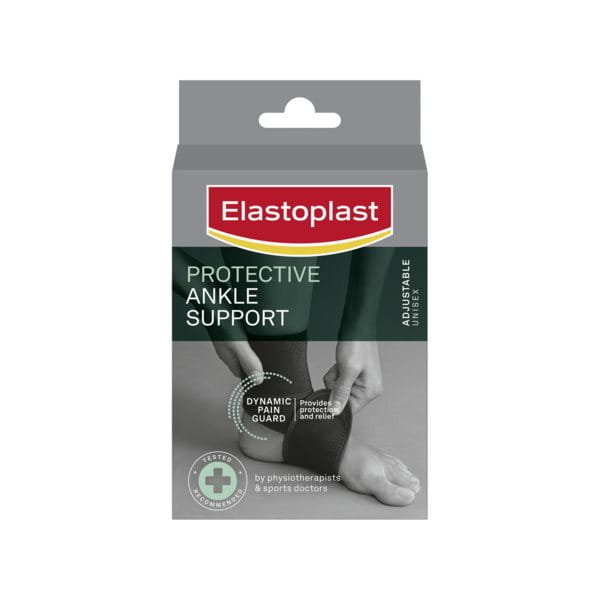A broken ankle refers to a fracture or break in one or more of the bones that make up the ankle joint. This injury can occur as a result of various factors, including trauma from accidents or falls, sports injuries, and twisting or rolling the ankle beyond its usual range of motion.
Anatomy of the ankle

A complex joint, the human ankle connects the lower leg bones, the tibia and the fibula, to the foot. The main bone of the ankle is the talus, which forms the lower part of the joint and connects to the tibia and fibula. The talus sits on top of the heel bone, which supports the body's weight during standing and walking.
On the inner side of the ankle is the tibia. Also known as the shinbone, it is one of the two long bones located in the lower leg. The tibia is the larger and stronger of the two bones.
Running parallel to the tibia is the fibula, which is the smaller and slender bone located on the outer side of the leg. The fibula plays a supportive role in the leg, providing stability and acting as a site for muscle attachment. It runs from the knee joint down to the ankle joint, where it helps to form the prominent bone on the outside of the ankle.
Broken ankle symptoms

Here are the common symptoms associated with a broken ankle:
- Pain: An intense and immediate pain is often felt at the site of the fracture. The pain may be severe and worsen with movement or weight-bearing. If the affected area is sore or tender to touch, it is most likely a fracture.
- Swelling: The area around the broken ankle may become swollen, possibly quite rapidly, and result in visible enlargement of the ankle.
- Bruising: Bruising, or skin discolouration, can develop around the ankle.
- Deformity: In some cases, a broken ankle may cause an obvious deformity, such as the ankle appearing misaligned or bent at an abnormal angle. This is more common in severe fractures.
- Difficulty walking or bearing weight: Due to the pain and instability caused by a broken ankle, walking or putting weight on the affected foot may be extremely challenging or impossible.
- Limited range of motion: Ankle movement may be significantly restricted due to pain and swelling, making it difficult to flex or extend the foot and toes.
- Sound: With severe ankle sprains you may hear a ‘popping’ sound, however with a broken ankle it would be more likely to sound like a ‘crack’.
- Tingling: As well as sharp and severe pain, a broken ankle will also lead to numbness and tingling.
An X-ray, or other imaging tests, may be necessary to confirm the fracture and determine its severity.
Sprained ankle vs broken ankle
While both a broken ankle and a sprained ankle can cause pain and swelling, the key difference lies in the involvement of the bones. A broken ankle involves a fracture of the bones, while a sprained ankle involves damage to the ligaments.
With sprains there are degrees of severity of the injury, you can find out more about the different symptoms here.
A couple of key differences from a broken ankle and a sprained ankle relate to the types of pain. For example, if the ankle is sore to touch in areas around the bone, particularly softer parts of the ankle, then it’s most likely a sprain. A sprained ankle will gradually increase in pain if not treated correctly.
How long does a broken ankle take to heal?
The recovery time for a broken ankle can vary depending on several factors, including the severity of the fracture, the type of treatment provided, and individual healing abilities.
However, it's important to note that this is a rough estimate and actual recovery times can vary.
- For minor fractures or hairline cracks, immobilisation with a cast or boot may be sufficient, and the healing process typically takes around six to eight weeks.
- More severe fractures that require surgery may take longer to heal. In these cases, recovery may extend to 10 to 12 weeks or even longer.
After the initial healing period, additional rehabilitation and physical therapy may be necessary to regain strength, mobility, and function in the ankle. This phase of recovery can take several weeks to months, depending on the extent of the injury.
Most common types of broken ankle
There are several types of ankle breaks, varying in severity, but here are the two most common types of breaks:
Lateral malleolus fracture
This is the most common form of a broken ankle. It is where the fibula bone on the outer side of the ankle is broken. This fracture can cause pain, swelling, and difficulty in bearing weight on the affected leg. Treatment usually involves immobilisation with a cast, boot, or surgery, depending on the severity of the fracture.
A lateral malleolus fracture is usually stable enough to walk on after the injury, though it will be very painful. If the bone is displaced after the break, it will require surgery which is typically done with plates and screws. You will have to keep weight off of it for several weeks.
Bimalleolar ankle fracture
This is the second most common type of break. A bimalleolar ankle fracture occurs when both the inner and outer parts of the ankle bone, known as the malleoli, are broken. The malleoli include the medial malleolus on the inner side (connected to the tibia bone) and the lateral malleolus on the outer side (connected to the fibula bone). When both of these bones are fractured, it can cause severe pain, swelling, and difficulty in walking or bearing weight on the affected leg.
Treatment usually involves surgery to realign and stabilise the broken bones using screws, plates, or wires. This form of break can take two to four months before any weight is able to be out on the ankle and full recovery won’t be completed for four to six months.
Other common ankle break types:
- Medial malleolus fracture: This refers to a fracture of the tibia bone on the inner side of the ankle.
- Trimalleolar fracture: This is a more severe ankle fracture that involves fractures in the lateral and medial malleoli, as well as the outside aspect of the tibia, known as the posterior malleolus.
- Pilon fracture: This is a complex fracture that involves the bottom part of the tibia, usually extending into the ankle joint. It is often caused by high-energy trauma.
Broken ankle treatment
If the ankle is broken you should get medical help immediately, but here are some of the expected treatments to start the recovery process.
- Immobilisation: The ankle is typically immobilised using a cast, splint, or walking boot to keep the bones in place and promote healing. This helps stabilise the ankle and reduce further injury.
- Medication: Pain medications may be recommended or even prescribed to manage pain and discomfort during the healing process.
- Elevation: Keeping the affected leg elevated above heart level can help reduce swelling. It's advised to prop the leg on pillows or cushions while resting or sleeping.
- Ice: Applying ice packs or cold compresses to the swollen area can help alleviate pain and reduce swelling. Ice should be wrapped in a cloth or towel and applied for 15-20 minutes, several times a day.
- Weight-bearing restrictions: Depending on the severity of the fracture, weight-bearing may be partially or completely restricted. Crutches, a walker, or a wheelchair may be used to assist with mobility during the healing period.
- Physical therapy: Once the bones start to heal, a healthcare professional may recommend specific exercises and physical therapy to restore strength, flexibility, and range of motion in the ankle. This helps regain functionality and prevent stiffness.
- Surgery: In some cases, surgery may be necessary to realign and stabilise the broken bones. Surgical intervention is typically considered for more complex fractures or cases where non-surgical treatments are unlikely to provide adequate healing.
Elastoplast Supports to help with broken ankle recovery
The Elastoplast Protective Ankle Support reduces overstraining to relieve pain and is ideal for protecting the ankle once it is out of the cast or boot after an ankle break. This maintains warmth to support circulation, while the Dynamic Pain Guard provides protection and relief to the injury.
For advanced flexibility and stabilising support, the Performance Ankle Support aids active recovery with Dynamic Guard Technology once you are ready to resume physical activity. This stimulates blood flow to enhance recovery.
Can you walk on a broken ankle?
Although for less severe fractures it is possible to walk on the ankle, it will be very painful to do so. Whether the ankle is broken or sprained, it is important to keep weight off of it immediately after the injury. If you suspect you have a broken ankle, or a very severe sprain, see a doctor for an examination of the ankle.







